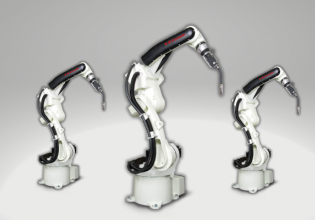Opinion: Where Are the New Automotive Workers?
The results from the Global ABB Automotive Manufacturing Outlook Survey highlight the struggles of the automotive industry to find skilled workers. Is it the fault of foreign manufacturing and education?
ABB recently released the results from its Global Outlook Survey of automotive manufacturing companies to see what needs they anticipate in terms of workforce. From the survey results, it is clear that there is a shortage of workers entering automotive manufacturing, with 31% of respondents stating that worker shortage is among their top three concerns. When discussing the rising costs of running a manufacturing plant, 35% stated that labor costs were the primary worry.

ABB's Global Automotive Manufacturing Outlook Survey looks at the workforce challenges in the automotive industry. Image used courtesy of ABB
Worker Pipeline
Supply and demand economics is no different for goods and services. When there are too few laborers for a job, their costs will increase. A healthy worker pipeline has retiring workers replaced by new blood, an environment where mentorship and apprenticeship have the aging workforce training the new workers.
Something in this pipeline is broken. Sixty years ago, this could be relied upon. Manufacturing was a “good job,” providing opportunities to many who lived on small, failing farms and other struggling businesses, particularly in rural communities. With the standard high school shop classes, a high school graduate had a leg up in the manufacturing world.
Now, things are different. For many years, the pressure to go to college to get a “good” job, meaning an office job for many, has steered high school students out of the trades and manufacturing. That, plus other factors, such as global competition and the closing of manufacturing plants domestically, has taken its toll on the worker pipeline. The workforce is retiring, with no new recruits.
Is it totally the fault of foreign manufacturing or high schools? No. Part of the problem is buried in the argument about a “good job.”

Why is it acceptable to think that a career will be exactly the same at the end as the beginning? Image used courtesy of ABB
The Need for Upskilling
In the semiconductor industry, there is the infamous Moore’s Law, which loosely states that the number of transistors on a chip will double every eighteen months or so, meaning the processing power will also double every eighteen months. Why, then, is it acceptable to think that a career will be exactly the same at the end as it was at the beginning?
The apprenticeship model of the aged training the young worked for a long time, but now the young will likely need to perform different tasks than the aged. For the most part, the only way a person performs the same task for 30+ years is if the company they work for is not innovating. Also, if there is some task that does need to be performed repeatedly, it is ripe for automation and likely will not require a human to perform it.
The end result: the old model of manufacturing workers performing the same task over and over again until they retire is gone. Instead, there is a constant need to upskill, learn, and adapt to new innovations. This includes automation systems. Where there is the benefit to learning how to run a lathe manually, there are opportunities for growth by learning computer-aided design (CAD) and teaching a manufacturing cell how to run the lathe automatically.

Automation can help make up some of the missing workforce, but not all. Image used courtesy of ABB
Final Thoughts
While automation can make up for some missing workforce, the machines cannot run themselves. Behind every manufacturing operation is a group of engineers and managers that know how to make a plant run efficiently, constantly coming up with new ideas and ways to optimize the process. There are also skilled laborers who provide insights into how processes can be improved. There are also unskilled laborers who may not have insights into the process as a whole but can develop expertise in machine maintenance or perform some of the necessary tasks that are too costly or complicated to automate.






